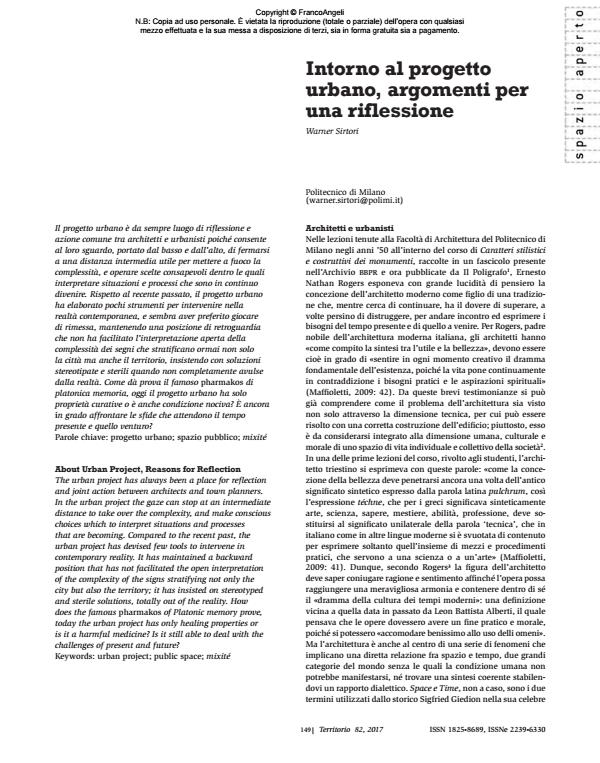About Urban Project, Reasons for Reflection
Journal title TERRITORIO
Author/s Warner Sirtori
Publishing Year 2017 Issue 2017/82
Language Italian Pages 8 P. 149-156 File size 2507 KB
DOI 10.3280/TR2017-082025
DOI is like a bar code for intellectual property: to have more infomation
click here
Below, you can see the article first page
If you want to buy this article in PDF format, you can do it, following the instructions to buy download credits

FrancoAngeli is member of Publishers International Linking Association, Inc (PILA), a not-for-profit association which run the CrossRef service enabling links to and from online scholarly content.
The urban project has always been a place for reflection and joint action between architects and town planners. In the urban project the gaze can stop at an intermediate distance to take over the complexity, and make conscious choices which to interpret situations and processes that are becoming. Compared to the recent past, the urban project has devised few tools to intervene in contemporary reality. It has maintained a backward position that has not facilitated the open interpretation of the complexity of the signs stratifying not only the city but also the territory; it has insisted on stereotyped and sterile solutions, totally out of the reality. How does the famous pharmakos of Platonic memory prove, today the urban project has only healing properties or is it a harmful medicine? Is it still able to deal with the challenges of present and future?
Keywords: Urban project; public space; mixité
Warner Sirtori, Intorno al progetto urbano, argomenti per una riflessione in "TERRITORIO" 82/2017, pp 149-156, DOI: 10.3280/TR2017-082025